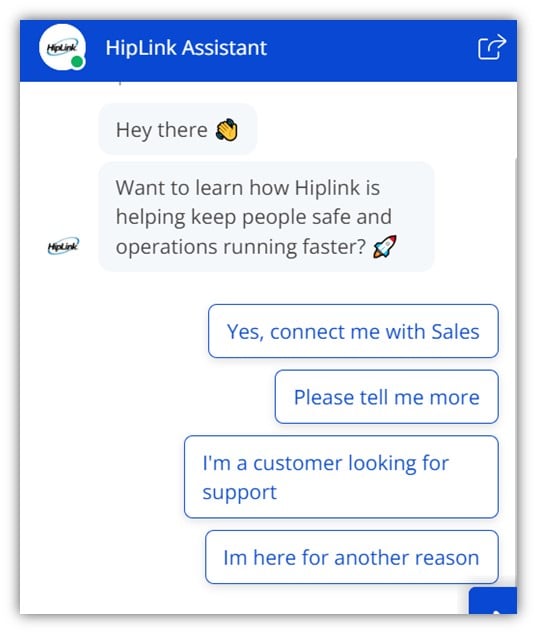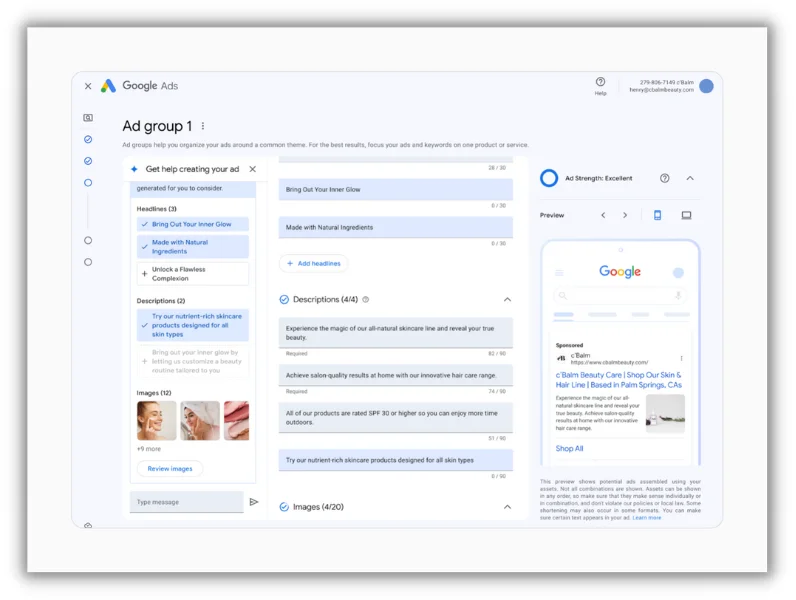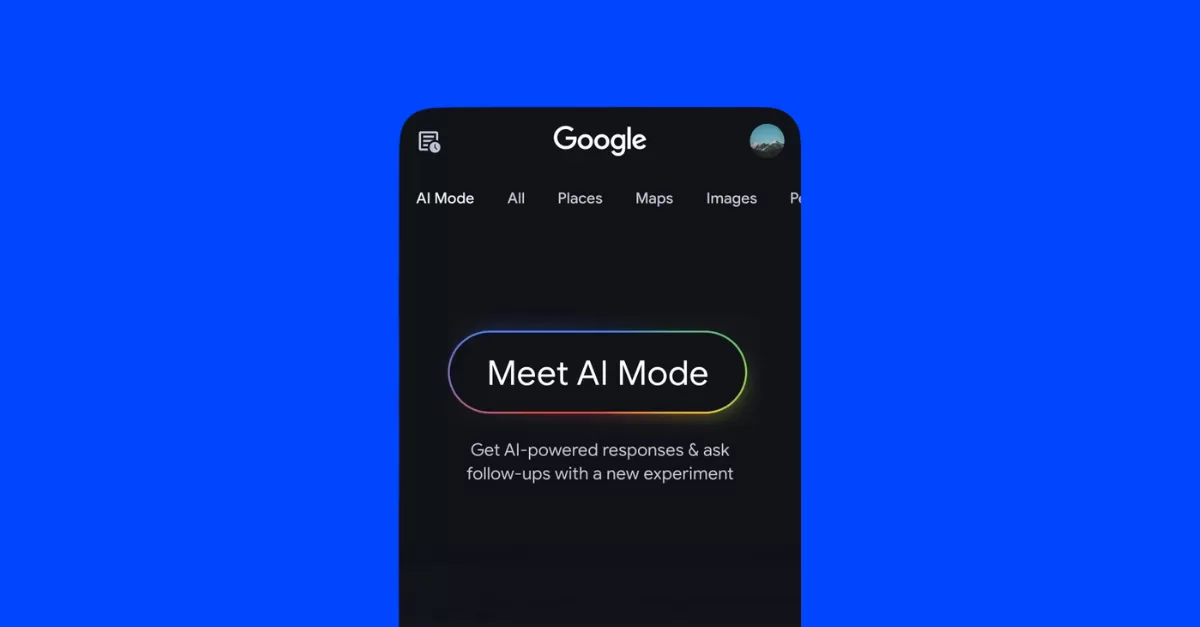There’s no denying the past year has been a big one for AI. Within the span of a year, generative AI went from a niche interest to a pop culture phenomenon.
It should come as little surprise that marketers are using AI in every facet possible, from content ideation to research and beyond. The growth and change of AI shows no signs of slowing down, so it goes without saying that marketing use cases for AI will shift significantly in the coming months and years as well.
That’s why today, we’re exploring the top AI marketing trends of 2024:
- Further refinement of ad targeting
- Improved AI marketing automation
- More capable chatbots
- More use of predictive analytics
- Improved research and decision-making
- Continued adoption of voice-based shopping
- More use of multimodal AI
Top AI marketing trends for 2024
Get a deeper dive into each AI trend and find out what it means for your marketing strategy this year.
1. Further refinement of ad targeting
Many marketers are using AI for improved ad targeting. Artificial intelligence can parse through large sets of audience data, and then help you tweak your ad targeting and messaging. Expect to see this AI marketing trend continue and evolve in 2024.
This could result in more accurate ads but also a higher bar for what constitutes a successful ad. For marketers, this means focusing more on quality and ensuring your ads aren’t missing the mark.
What this means for you
Increased competitor and overall use of AI for ad targeting begs the question: will consumers become more ad savvy and scrutinous?
While you don’t have to use AI for improved targeting now, keep in mind consumers could become more scrutinous of ads and expect even more refined messaging. Track the performance of your ads even more closely and A/B test messaging until you feel it’s as targeted as possible.
🛑 Speaking of ads, want to make sure yours are hitting the mark? Try our free Google Ads Grader for an instant audit of your account.
2. Improved AI marketing automation
Marketing automation is all the rage, from automated email sends to programmatic advertising. Expect to see this technology continue evolving and advancing. This could result in the ability to pivot quicker, run more micro-campaigns, feasibly deliver to smaller segments, and more.
Increased use of AI-powered marketing automation could result in audience demands shifting. People may grow to expect more timely campaigns, more niche segmentation, and content that’s even more hyper-personalized.

What this means for you
Factor the aforementioned audience demand shifts into your content ideation as you brainstorm campaigns in the coming quarters. Automation powered by AI could allow you to pepper in smaller campaigns, so think about any potential pain points or topics you could target with these size efforts. How could automating social post scheduling or email sends free you up to work on other efforts?
3. More capable chatbots
Chatbots are capable of so much more than acting as a stand-in lead capture form. (Although they’re great at that, too.)
Recent advances in AI are allowing chatbots to answer more nuanced customer questions, including those about products and services. This makes it possible for chatbots to guide visitors through your site, and ultimately through the funnel.
More and more companies will likely start adopting advanced chatbots that can answer more niche questions. If you’re not already, now’s a great time to implement your own advanced chatbot. This will help you stay ahead of the competition and give you a better chance at staying competitive.

What this means for you
Think about your content strategy for your chatbot. Not only what your chatbot will say, but also what kind of content you have on your site that it can send to users when they ask certain questions.
Check your chatbot logs as time goes on and see what kinds of questions people are asking, and whether they’re getting the help they need. If there are clear gaps, write content that your chatbot can then guide people to, ensuring those knowledge gaps are filled and people’s needs are met.
🧐 Are you using AI the right way? Find out in this free download: Emergency Guide to AI in Marketing
4. More use of predictive analytics
Predictive analytics allows marketers to analyze customer data to predict the market, as well as customer actions. While this technology isn’t new, it’s getting more capable each year.
It’s likely AI will continue expanding predictive capabilities, allowing for more accurate predictions, better product recommendations, and more. For example, advanced predictive analytics will allow companies to forecast sales, predict how pieces could perform based on select audiences and terms, and even which products might perform better in a campaign.
What this means for you
Rich, historical customer and site data are crucial for accurate predictive analytics. Set yourself up for success and make sure you’re capturing the right data now, whether you’re using predictive analytics or not. This way, you’ll have all the historical data you need to hit the ground running with predictive analytics the moment you find the right solution for your organization.
5. Improved research and decision-making
For smaller businesses, research is often difficult and time-consuming. This puts smaller businesses at a disadvantage when compared to larger organizations with entire teams dedicated to research. Fortunately, the days of manual research and hindered decision-making are behind us all.
🤫 Psst. Speaking of research. Want to expedite your keyword research process? Make sure you check out our handy, free keyword research tool!
Advanced AI is capable of assisting with numerous forms of marketing research, from answering quick questions about a content topic to quickly describing how various tools perform. This can help smaller companies expedite the research process, make more informed decisions, and even quickly vet various tools they’re examining.
What this means for you
It’s a safe bet that AI will continue to advance in these capabilities in 2024. This will make it even more feasible for smaller companies to keep up with larger companies. This is great news for you, especially if you’re running a lean team. But, this also means competition will become fiercer as time goes on, as it will be a truly level playing field.
If you’re not already familiar with AI tools, like ChatGPT or Jasper, start learning them ASAP. See how you can use them to help streamline various marketing research processes to keep from falling behind in 2024. And of course, continue to focus on quality above all else, and fact-check anything you get from any AI tool!
6. Continued adoption of voice-based shopping
As AI continues to advance, the capabilities of voice-based search will as well. Even in 2022, 27% of US-based consumers used voice search to make payments. Gone are the days of only using voice to search for the answers to important questions, like, “How do I know when the cheese in the back of the fridge is bad?”
The continued adoption of voice-based shopping and searching will likely force marketers to base much of their strategy around the voice-based experience. If 27% of US-based consumers used voice for payment two years ago, the number will likely go up and up. Before long, voice-based payment and shopping will be the expected norm.
What this means for you
Create content focused on even longer-tail keywords that one would ask out loud in a voice search. Voice SEO is already on the radar for some, but not all companies. Creating content that’s tailored to the voice-search experience now will help set you up for success as AI allows for more and more refined voice-based shopping and searching.
7. More use of multimodal AI
Multimodal AI combines numerous inputs, including text and visuals, to deliver a more complete experience. This is opposed to other forms of AI that only pull from text or images or voice, rather than a combination. Generative AI is a prime example of multimodal AI, as many platforms are capable of creating content and visuals in one swoop.

Automatically created assets is just one multimodal AI feature available in Google Ads.
As multimodal AI technology grows in capabilities and adoption, more and more companies will be capable of outputting higher volumes of copy and visuals. This technology will also allow companies to have even more refined keyword and ad targeting as well.
The end result? Smaller companies that can compete with larger content teams.
What this means for you
Whether or not you’re using multimodal AI, there’s a good chance your competitors are. Don’t hesitate to use generative AI to brainstorm content ideas and supply your team with jumping-off points. But, make sure you have a vetting process that prevents your team from publishing generic, AI-generated content.
Again, focus on quality and what makes your company unique. This will allow you to stand out in a sea of companies using AI to generate copy and visuals.
Stay on top of these AI marketing trends
While AI is likely to evolve in capabilities and use cases in the coming years, in ways we can’t even imagine, there’s no denying it’s here for good. Continue to stay on top of the latest AI marketing trends to ensure you’re ready for everything coming your way. Keep up with the headlines, see what your competitors are up to, and stay in the loop as much as possible.
Beyond this, don’t neglect the importance of traditional marketing techniques, either. No matter the direction AI takes, foundational marketing knowledge and a focus on quality will always be paramount to success.
Need more 2024 marketing trends? We’ve got you covered:
- 7 Must-Know Digital Marketing Trends for 2024
- The 5 Biggest Google Ads Trends for 2024 (+6 Predictions)
- 7 Content Marketing Trends You Need to Know in 2024 (+Tips to Prepare)
- 9 Must-Know Facebook Advertising Trends & Tips for 2024
- 12 Biggest SEO Trends to Watch in 2024
- 9 Video Marketing Trends to Watch in 2024
- The Top 2024 Social Media Marketing Trends
- 8 Important Mobile Marketing Trends to Know for 2024
- 9 Email Marketing Trends That Will Deliver Growth in 2024







